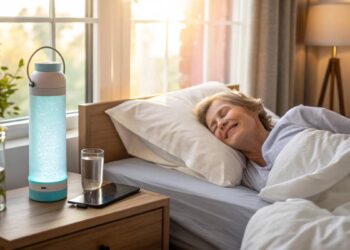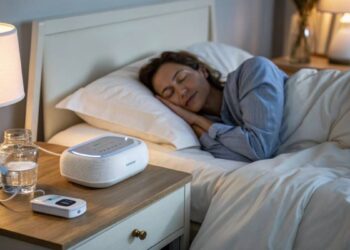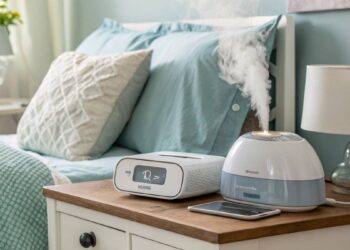Tossing and turning night after night? You’re not alone in the quest for quality shut-eye. From bleary-eyed new parents to shift workers battling their body clocks, sleep challenges are as diverse as the people who face them. But fear not, weary reader!
Whether you’re a chronic insomniac or simply curious about optimizing your slumber, this deep dive into sleep woes across different groups will shed light on common struggles and offer a beacon of hope for better nights ahead. So, grab a cozy blanket and settle in as we unravel the mysteries of sleep challenges – and discover how tracking your Zs might just be the key to unlocking your best rest yet.
Sleep Challenges Faced by Different Groups
Everyone struggles with sleep woes at some point, and these problems vary across different folks. Spotting these sleep hiccups can help pick out fixes, like giving those fancy sleep tracking rings a whirl to keep tabs on snooze patterns.
Chronic Insomnia Sufferers
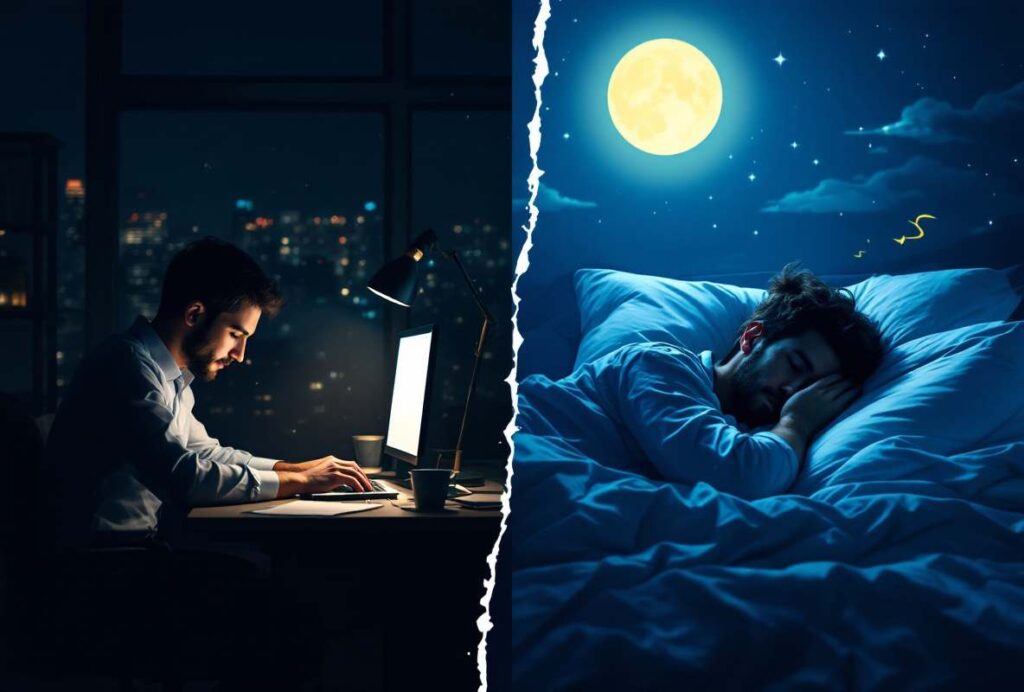
Imagine staring at the ceiling every night, counting sheep that never seem to do the trick. Chronic insomnia grips countless people, either robbing them of sleep at the start or dragging them back from dreamland too soon. Q: Why can’t they catch a wink and just hit the hay? They often grapple with extra-tired mornings, crabby moods, and a less-than-stellar day-to-day feel. Pondering, why can’t I fall asleep, is a common theme for those stuck in this cycle.
“Sleep is the golden chain that ties health and our bodies together.” – Thomas Dekker
New Parents Experiencing Sleep Disruption
Babies—cutest alarm clocks ever, right? New parents are pros at night wake-up calls thanks to their little ones crying for food or a clean diaper at ungodly hours. This sleep deprivation can lead to feeling darn near zombified, not to mention possibly weighing heavy on mom or dad’s mental peace. Many parents look into pregnancy insomnia remedies in their quest for a little more shuteye.
| Group | Main Challenges |
|---|---|
| Chronic Insomnia Sufferers | Trouble getting and staying asleep |
| New Parents | Constant night-time disturbances |
Shift Workers with Irregular Sleep Patterns
Shift workers roll alongside their bizarre work schedules, often throwing their sleep out of whack. With their inner clock on a perpetual spin cycle, actual rest becomes a slippery goal, piling up sleepy-time debt that health can’t cash. For ideas on keeping the Z’s coming during topsy-turvy hours, sleep hygiene checklists are worth a peep.
“For sleep, one needs endless depths of blackness to sink into; daylight is too shallow, it will not cover one.” – Anne Morrow Lindbergh
Anxiety/Stress-Related Insomnia Cases
Anxious minds make for lousy bed partners. When stress tags along to bedtime, it’s all jittery jitters and racing thoughts that keep eyelids from drooping. Those battling this uphill snooze struggle really ought to dig into what makes insomnia and anxiety such a peculiar pair.
Older Adults with Age-Related Sleep Changes
Getting on in years? Then sleep may just shuffle its deck on you. Older folks often notice it’s trickier than ever to zonk out or they bump into dawn way too early. It’s part aging, part health knickknacks tapping their shoulders. A chat with the doc might spill beans on stuff like sleep restriction therapy to catch more z’s.
People Taking Medications Affecting Sleep
Some meds play the villain in the sleep saga, either messing up the natural snooze cycle or just being rude. Folks swallowed these for all sorts of reasons should chat up their healthcare crew about switching gears. Sprinkling in a bit of exercise for insomnia and calming moves like meditation for sleep can put a damper on those medicine-induced bedtime blunders.
| Group | Associated Factors |
|---|---|
| Shift Workers | Weird work hours, internal clock chaos |
| Anxiety/Stress-Related Insomnia Cases | Mind in hyperdrive, swollen worries |
| Older Adults | Body changes, pesky health factors |
| Medication Users | Sleep side effects |
Learning what sleep fuss each group wrestles with arms folks with the smarts to reach for better sleep health, giving gadgets like sleep tracking rings a try in the process.
Why Keeping Tabs on Your Zs Matters
Getting cozy with your blanket isn’t all there is to a good night’s sleep. For folks wrestling with insomnia or restless nights, monitoring those snooze patterns can unlock some serious “ah-ha!” moments about your bedtime habits.
What’s Up with Your Sleep Routine?
Keeping an eye on sleep will let you peek into your personal slumber cycles. You’ll get to know how long you lie awake counting sheep, the total hours of shuteye you snag, and how often you stir like a cat at midnight. These tidbits open a window into how restful your nights truly are.
| Sleep Basics | What It Means |
|---|---|
| Time to Knock Out | How many minutes you spend staring at the ceiling before dozing off. |
| All-Night Slumber Count | Total sleep hours you manage to catch. |
| Tossing & Turning Score | Number of times you blink awake. |
| Sleep Quality Rating | The golden star rating of your sleep based on various checks. |
When you dig into these details, you’ll discover if you’re actually recharging or just existing in snooze mode. For more on battling the “why can’t I fall asleep?” blues, check out our articles on why can’t I fall asleep and how long does insomnia last.
Spotting the Troublemakers
Beyond just getting the lay of the land on how you snooze, keeping tabs on your sleep can help spotlight the troublemakers that mess with dreamland. Watch out for these common bedtime nuisances:
- Sleep Apnea: Those constant disruptions could be signs of sleep apnea—when you’re gasping for breath in your zzzz.
- Restless Leg Syndrome: Notice a jiggy legs dance routine during sleep? It might spell restless leg syndrome in motion.
- Stress Tsunami: If you find yourself waking up like it’s a pop quiz, stress and anxiety could be the culprits.
Gaining awareness of these pitfalls is a breeze with a reliable sleep tracker. For worrywarts thinking anxiety’s messing with their snoozing, check out insomnia vs anxiety for some insight. For the stubborn problems, tactics like sleep restriction therapy or getting your body moving with exercise for insomnia can be game-changers.
Grabbing the reins on your sleep onions offers up sweet improvements in your energy and focus. Armed with these suggestions, anyone can find the path to waking up feeling like they’ve struck morning gold.
Introducing Sleep Tracking Rings
If counting sheep just ain’t cutting it, sleep tracking rings might be your new best friend. These little life-savers are here to rescue folks battling those bedtime troubles, giving you a sneak peek into your sleep secrets. They unlock mysteries behind your forty winks, helping you snag better shut-eye.
How Sleep Tracking Rings Work
Imagine wearing a nifty gadget on your finger that becomes your sleep sidekick. These rings come packed with high-tech sensors to read your inner workings like heart rate, body warmth, and how much you’re tossing. They dish out info on your sleep journey—like when you’re in ZZZ city or a busy dreamland.
These rings play nice with your smartphone, transmitting all those sleepy deets right to an app. It’s like having a personal sleep detective offering up clues about your rest. Some rings even toss in tidbits to help you tweak your sleep habits based on your snooze stats.
| Function | What’s Up |
|---|---|
| Heart Rate Monitoring | Keeps tabs on your ticker while catching some z’s. |
| Movement Detection | Watches your nighttime wiggles to break down sleep stages. |
| Temperature Tracking | Notes your body’s temp shifts through the night. |
Benefits of Using Sleep Tracking Rings
For anyone wrestling with restless nights, these rings can be a game-changer. Here’s the lowdown on why they’re worth slipping onto your finger:
In-Depth Sleep Scoop: Peek into your sleep routine and get why you feel all groggy or fresh.
Custom Tips Just for You: Lots of these rings share advice based on your sleep scorecard, making it easier to adopt habits that help you snooze better.
Easy and Comfy: Say bye to clunky contraptions. These rings are sleek and hassle-free, letting you sleep like a baby.
Encourages Better Habits: Recording your sleep nudges you to take bedtime seriously and think healthier all around.
Want more tricked-out tips to up your sleep game? Check out our guides on sleep hygiene checklist and exercise for insomnia.
Features to Look for in Sleep Tracking Rings
Shopping around for the perfect sleep ring? Scope out these features to make sure it checks all your boxes:
| Feature | Why It Matters |
|---|---|
| Battery Life | Keeps you tracking without needing a plug every night. |
| Data Accuracy | Trustworthy stats are key to cracking your sleep puzzle. |
| Smartphone Compatibility | No tech hiccups here—make sure it jives with your phone. |
| Comfortable Fit | Snug enough to wear all night but not too clingy. |
| Sleep Stage Tracking | It should nail recognizing your journey through sleep depths. |
Find a ring with all these goodies, and you’re well on your way to owning your night. Curious about common bedtime head-scratchers? Take a peek at why you might be feeling wide awake at night in our why can’t I fall asleep post.
Evaluating Sleep Tracking Rings
When you’re checking out sleep tracking rings, there’s a bunch of stuff to think about to make sure you’ve chosen one that vibes with you. You wanna look at how spot-on the sleep data is, if it’s a breeze to use and comfy, and if it plays nice with your gadgets.
Accuracy of Sleep Data
What’s a sleep tracker worth if it doesn’t give you the straight goods? Sleep tracking rings come packed with little sensors to keep an eye on things like your heart rate, how much you toss and turn, and your different snooze stages.
Getting it right matters a lot ‘cause it can help you spot patterns in your sleep or what might be messing it up. Check out this table showing the usual accuracy percentages people found in recent ring studies:
| Metric | Stretchy Approximation (%) |
|---|---|
| Sleep Time | 85 |
| Sleep Stages (REM, Light, Deep) | 80 |
| Heartbeat | 95 |
The better these percentages are, the more you’ll learn about your shut-eye and what might need a tweak.
User-Friendliness and Comfort
If your sleep is all over the place, comfort and user-friendliness make all the difference. You’d want a ring that’s cozy enough to forget you’re even wearing it.
Think about:
- Weight: You’ll sleep better if you barely notice it’s there.
- Material: Make sure it’s hypoallergenic, so you don’t wake up itching.
- Design: A slick look means it just stays out of your way while you catch some Z’s.
User-friendliness isn’t just about how it feels on your finger. The apps that come with these rings need to be clean and simple, showing you your sleep stats without making you squint.
Compatibility with Devices
No point in snagging a high-tech ring if it doesn’t jive with your phone or tablet. The best ones sync up hassle-free, usually with good old Bluetooth, to an app that dishes out tips on your sleep data.
Here’s what to keep in mind:
- Operating Systems: Make sure the app gives thumbs up to both iOS and Android.
- Integration: Some rings buddy up with other health apps, giving you a fuller picture of how you’re doing.
If you’re always wrestling with your sleep, picking the right tracking tool can help you get a handle on things and maybe even catch those elusive Z’s. Check out extras like our sleep hygiene checklist and tips to beat insomnia for some added guidance on improving your sleep game.
Tips on Improving Sleep Quality
Good snooze might just be the secret sauce to a happy life, especially if you find yourself tossing, turning, or counting sheep. Let’s explore some sneaky tips to upgrade your slumber game.
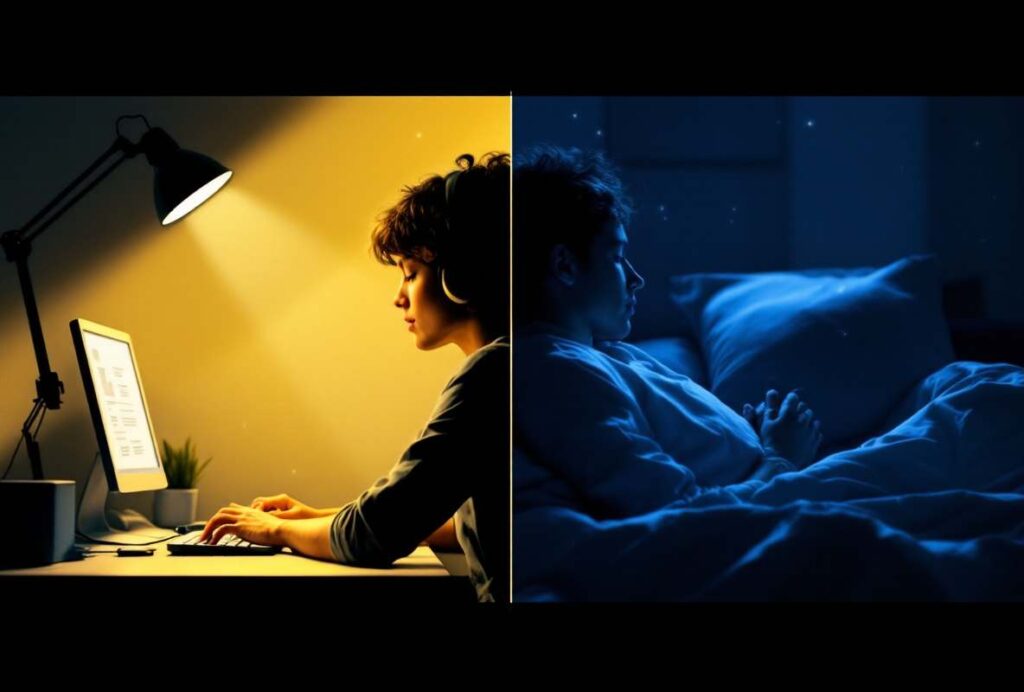
Establishing a Consistent Sleep Schedule
If your body’s a clock, then maintaining a regular sleep schedule is the winding key. Stick to going to bed and waking up at the same time every day—yep, even if you’re living for the weekend. This regularity keeps your internal gears in sync, helping boost your sleep game over time.
| Day | Bedtime | Wake Time |
|---|---|---|
| Monday | 10:30 PM | 6:30 AM |
| Tuesday | 10:30 PM | 6:30 AM |
| Wednesday | 10:30 PM | 6:30 AM |
| Thursday | 10:30 PM | 6:30 AM |
| Friday | 11:00 PM | 7:00 AM |
| Saturday | 11:00 PM | 7:00 AM |
| Sunday | 10:30 PM | 6:30 AM |
Creating a Relaxing Bedtime Routine
Prepping your body for a trip to dreamville with a relaxing bedtime routine is like waving a little white flag to the waking world. Engage in chill activities to let your body know the day is done. You might open a book, soak in a hot bath, or get stretchy with some laid-back yoga.
- Limit Screen Time: Dump the devices at least an hour before hitting the sheets to dodge that pesky blue light.
- Meditation: Trying meditation for sleep can help settle a racing mind.
- Aromatherapy: Lavender or other calming scents can set the mood for drift-off time.
Managing Stress and Anxiety
Stress and worry are the party-crashers of a peaceful night’s sleep. Taming these can transform your night. Here’s how you can slow that troubled mind:
- Mindfulness Practices: These help lower anxiety and can be quite the lullaby.
- Physical Activity: Regular workouts not only shape up your day but mellow out your nights. Check out exercises in our piece on exercise for insomnia.
- Sleep Hygiene: Follow a sleep hygiene checklist to ensure your space says, “Welcome to snooze-town!”
Seeking Professional Help when Needed
When all else fails, it’s OK to call in the experts. Techniques like Cognitive Behavioral Therapy for Insomnia (CBT-I) might be the nudge you need. Ponder more on this in our article on does cbt-i work. And a chat with a healthcare pro might uncover if underlying issues, like depression and insomnia or pesky medicine effects, are messing with your shut-eye.
Tuck these tips into your daily life, and you just might wake up on the right side of the bed more often.
Conclusion
As we’ve journeyed through the landscape of sleep challenges, it’s clear that restful nights are a universal desire, yet uniquely elusive for many. From the bleary-eyed new parent to the shift worker fighting their circadian rhythm, each group faces its own hurdles in the quest for quality sleep. But armed with knowledge and innovative tools like sleep tracking rings, we’re better equipped than ever to tackle these nocturnal nemeses. Remember, understanding your sleep patterns is the first step towards improvement. Whether it’s establishing a consistent routine, managing stress, or seeking professional help, there’s a path to better sleep for everyone. So tonight, as you lay your head on the pillow, know that you’re not alone in your pursuit of restorative rest. Sweet dreams are possible – it’s time to make them your reality.
Additional resources and authority references:
National Sleep Foundation:
https://www.sleepfoundation.org/
Sleep Research Society:
https://www.sleepresearchsociety.org/
American Academy of Sleep Medicine:
Sleep.gov (National Center on Sleep Disorders Research):
https://www.nhlbi.nih.gov/sleep
FAQs
Q1: How much sleep do adults really need?
A1: Most adults need 7-9 hours of sleep per night, according to the National Sleep Foundation. However, individual needs may vary slightly.
Q2: Can sleep tracking rings really improve my sleep?
A2: While not a cure-all, sleep tracking rings can provide valuable insights into your sleep patterns, helping you make informed decisions to improve your sleep quality.
Q3: What’s the best way to establish a sleep routine?
A3: Consistency is key. Try to go to bed and wake up at the same time every day, even on weekends. Create a relaxing pre-bed routine and make your bedroom conducive to sleep.
Q4: How can shift workers improve their sleep quality?
A4: Shift workers can benefit from creating a dark, quiet sleep environment, using blackout curtains, maintaining a consistent sleep schedule even on days off, and considering melatonin supplements under doctor’s guidance.
Q5: When should I see a doctor about my sleep problems?
A5: If sleep issues persist for several weeks and impact your daily life, or if you experience symptoms like loud snoring or gasping for air during sleep, it’s time to consult a healthcare professional.




